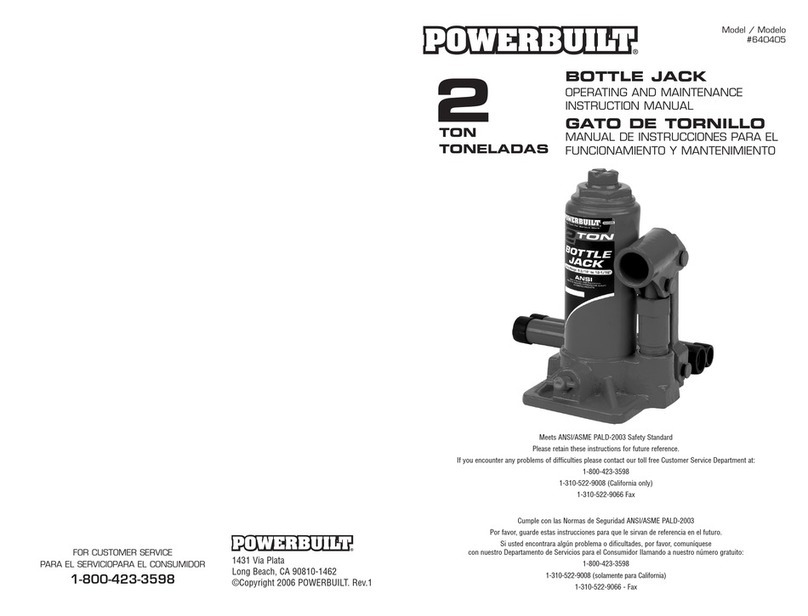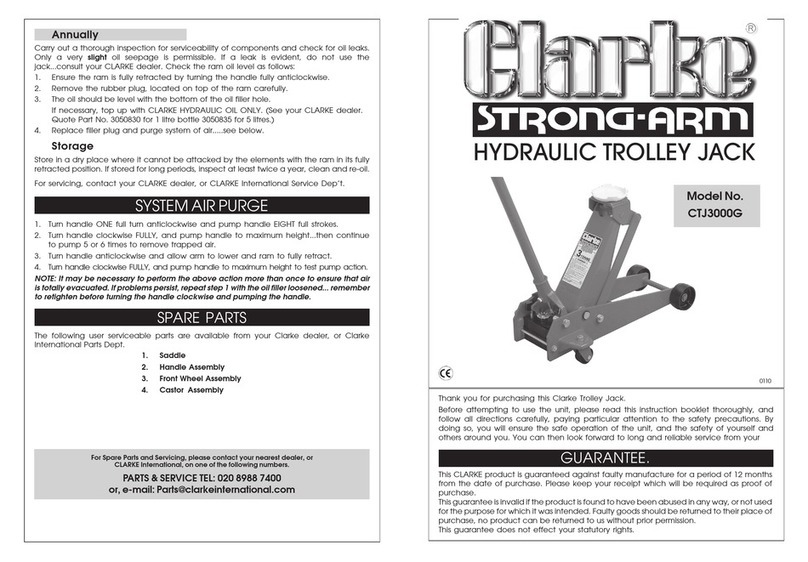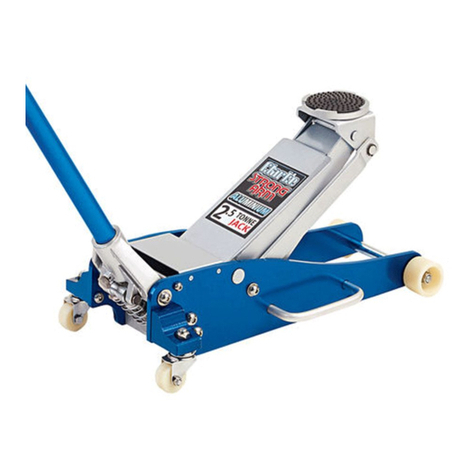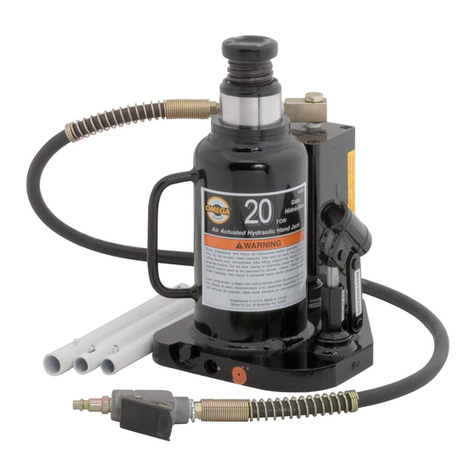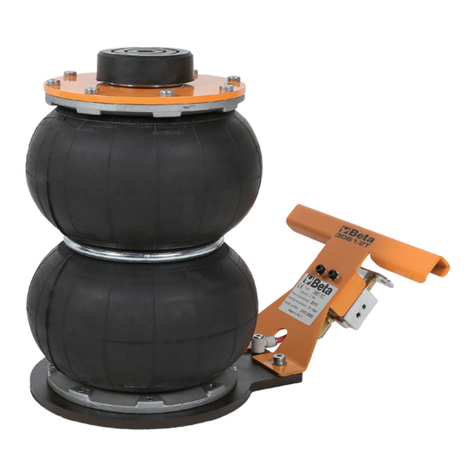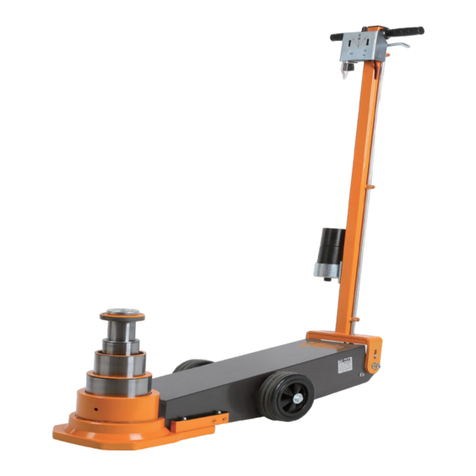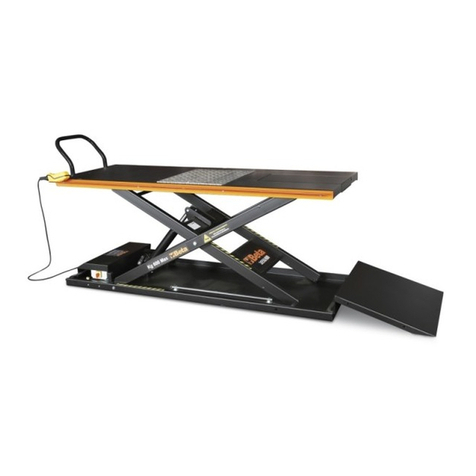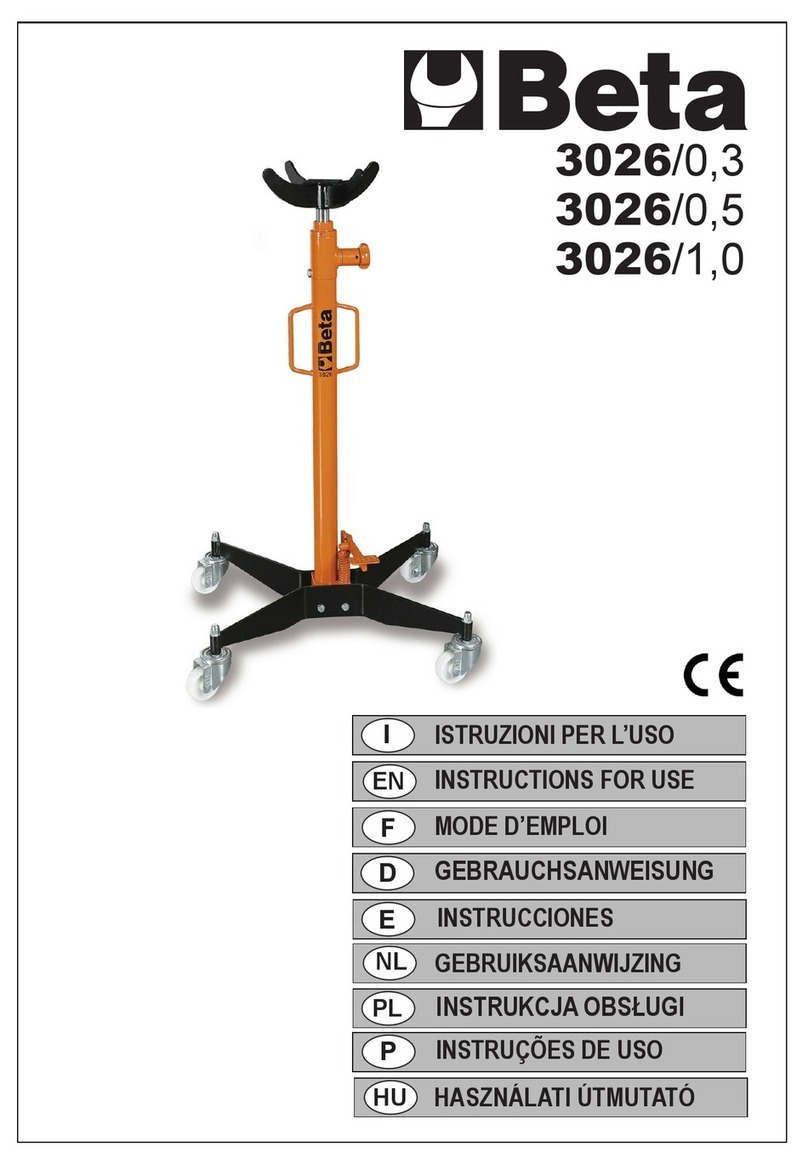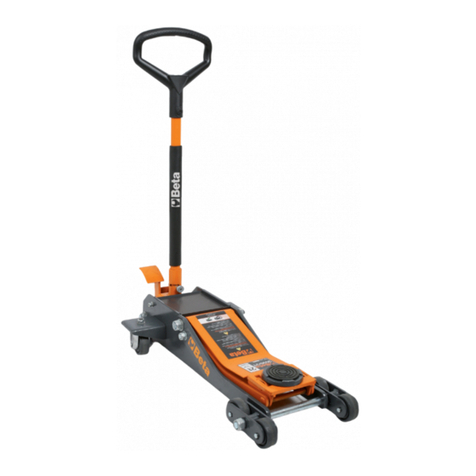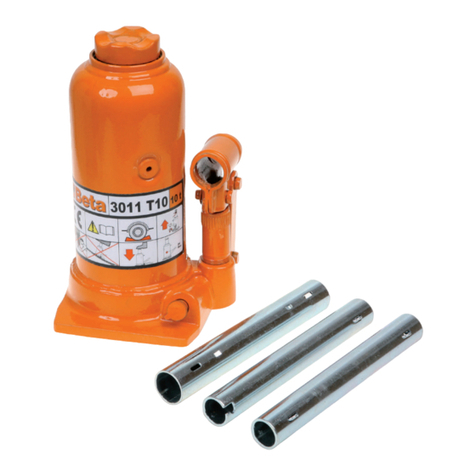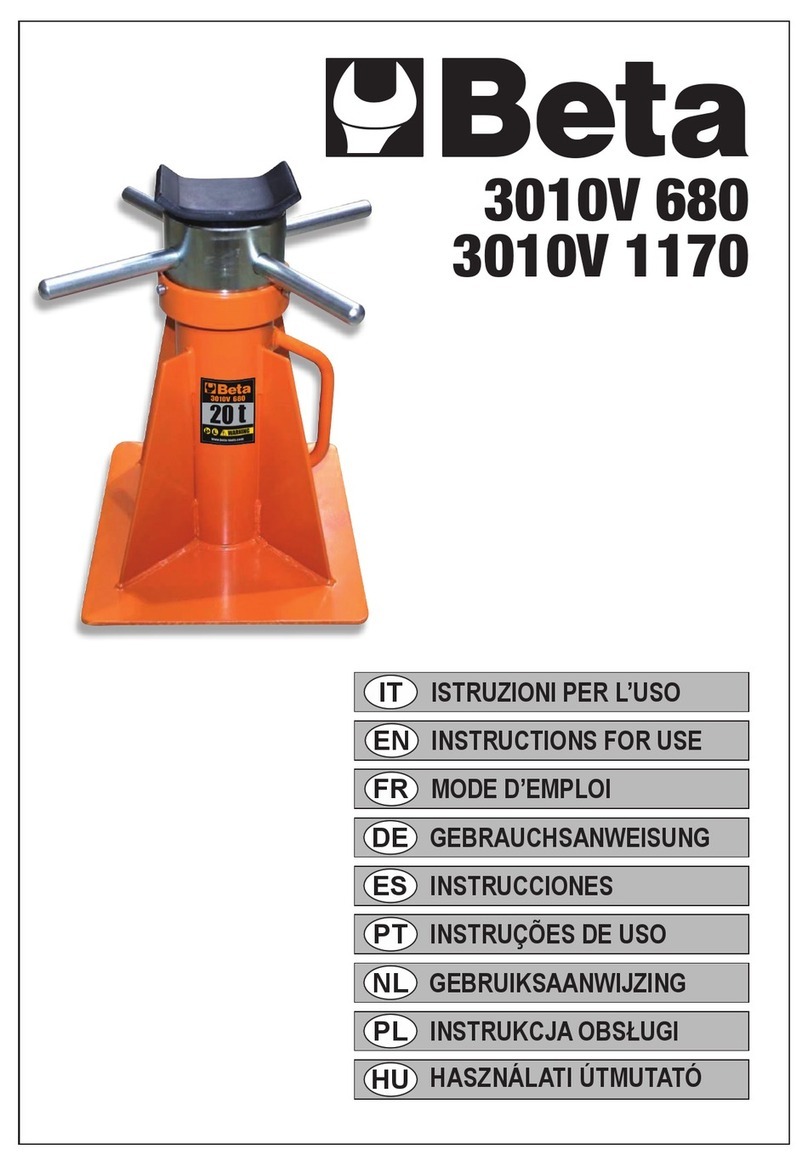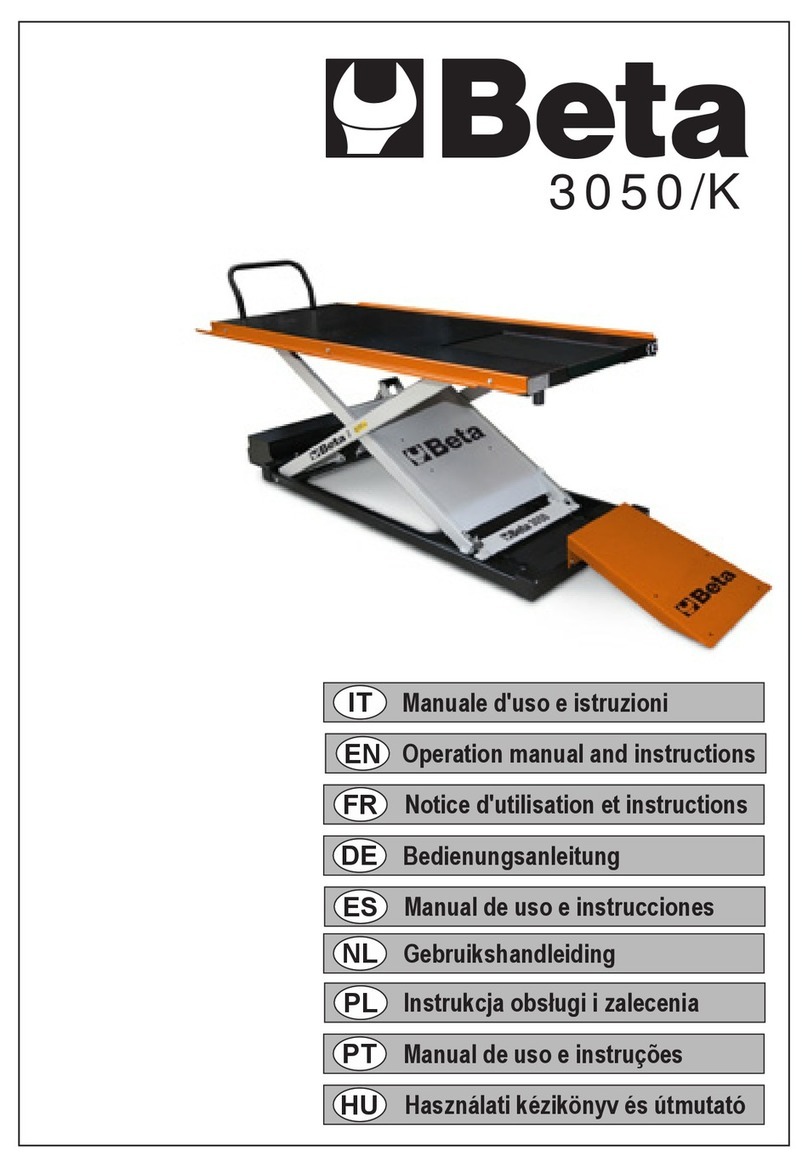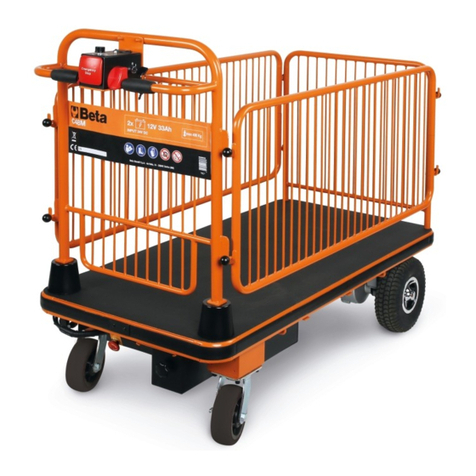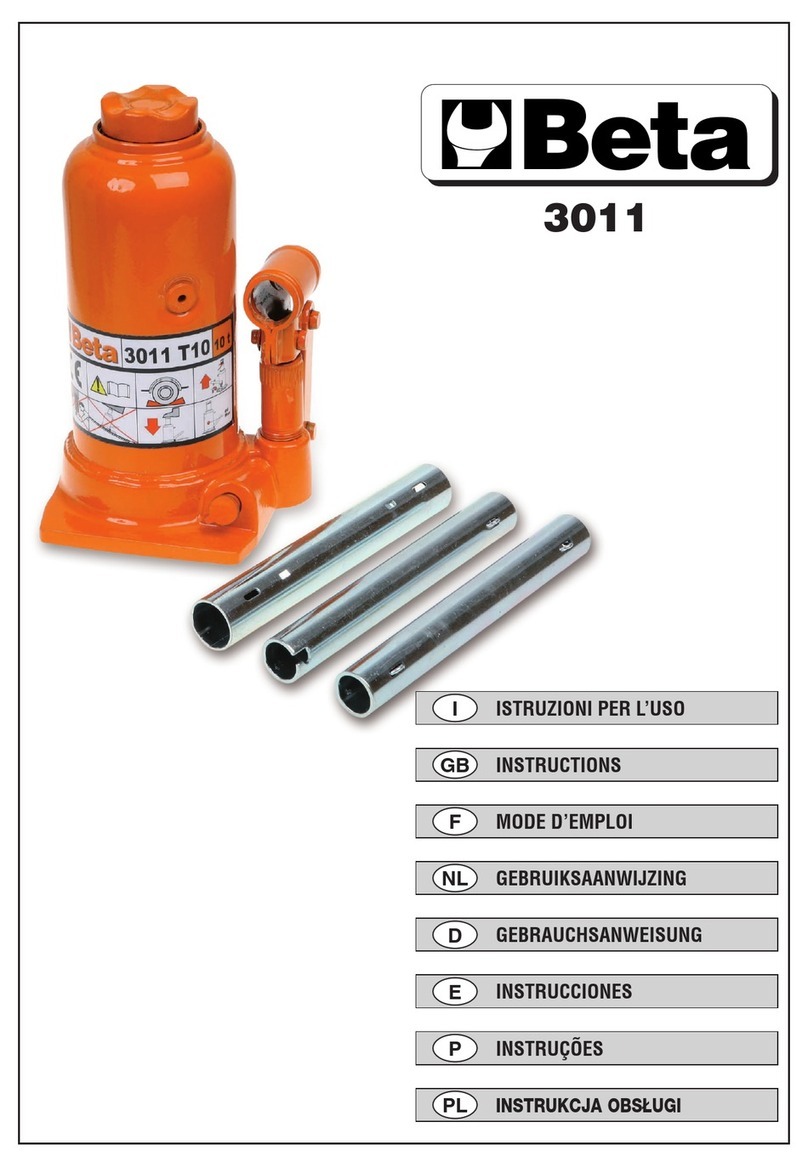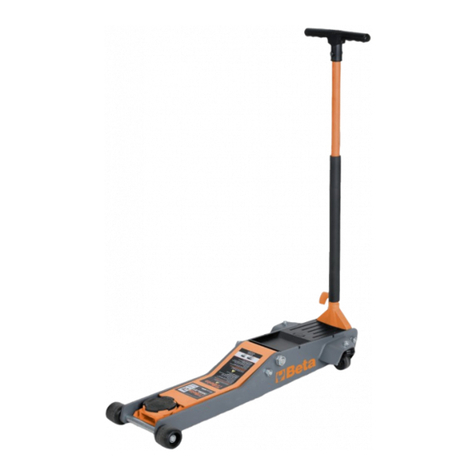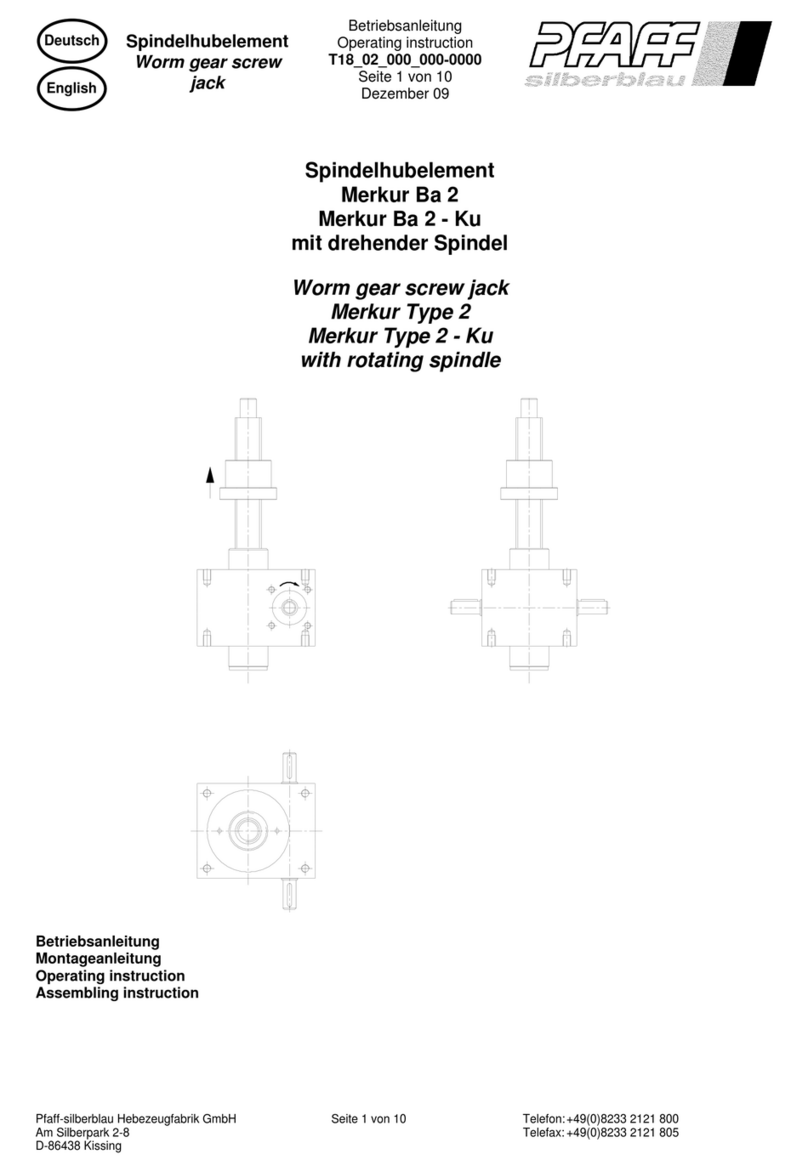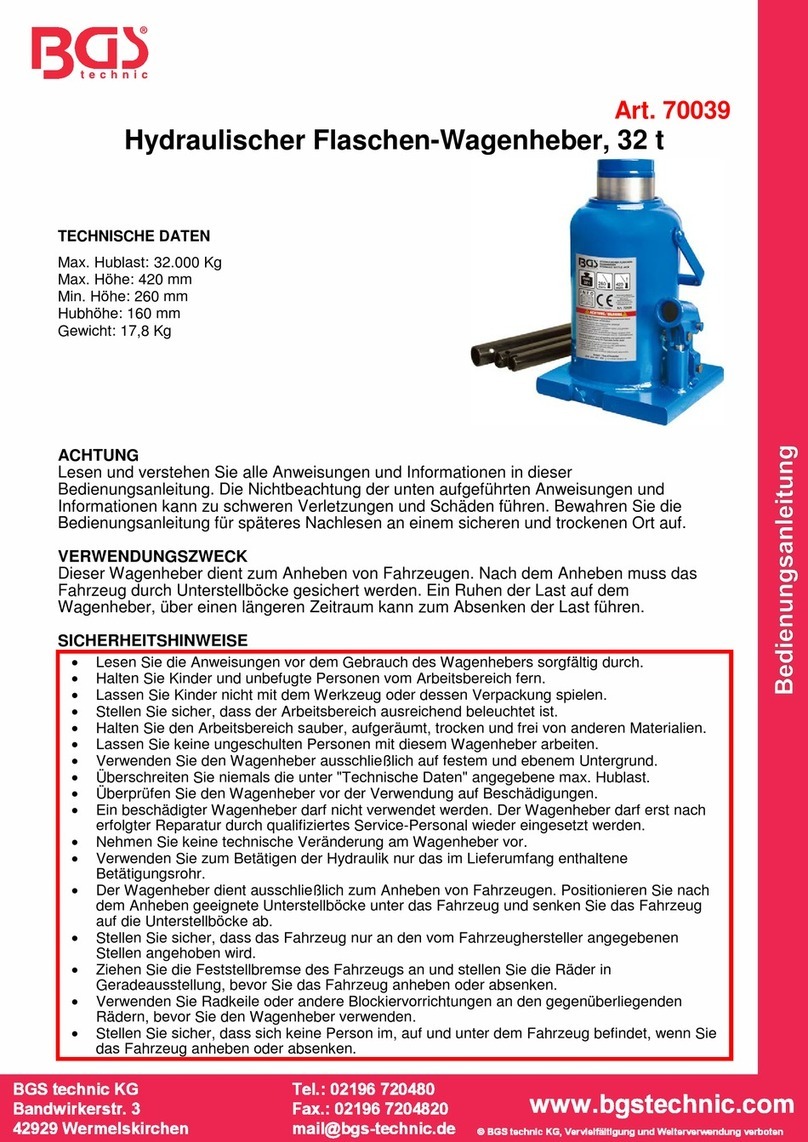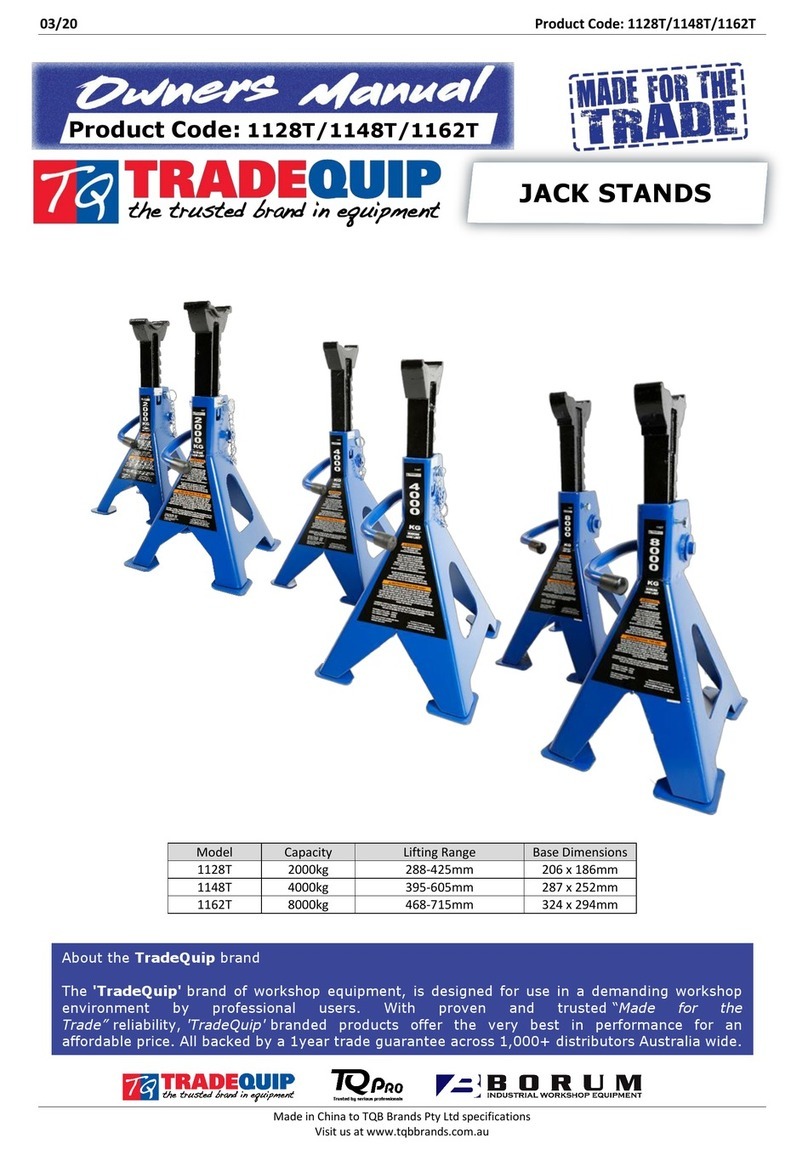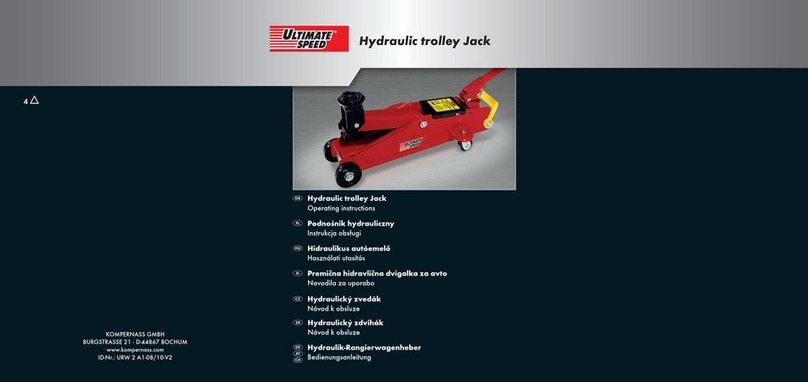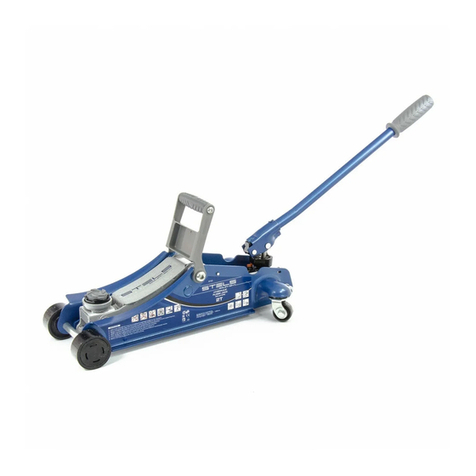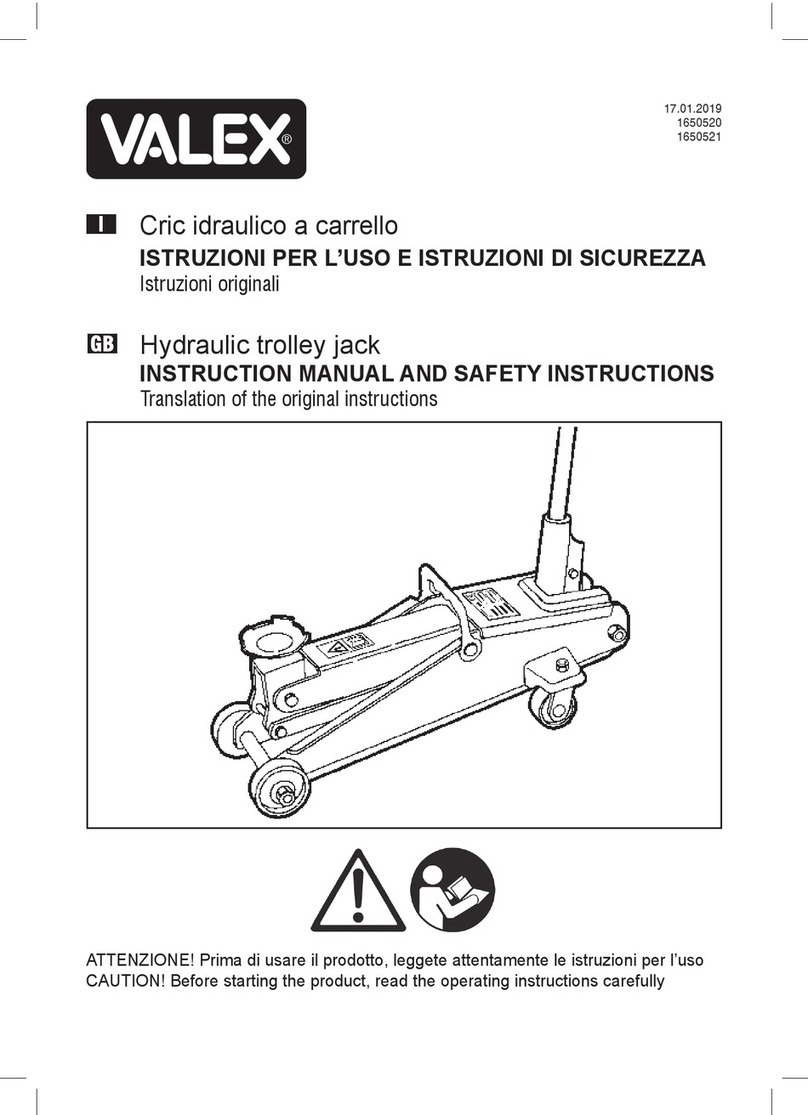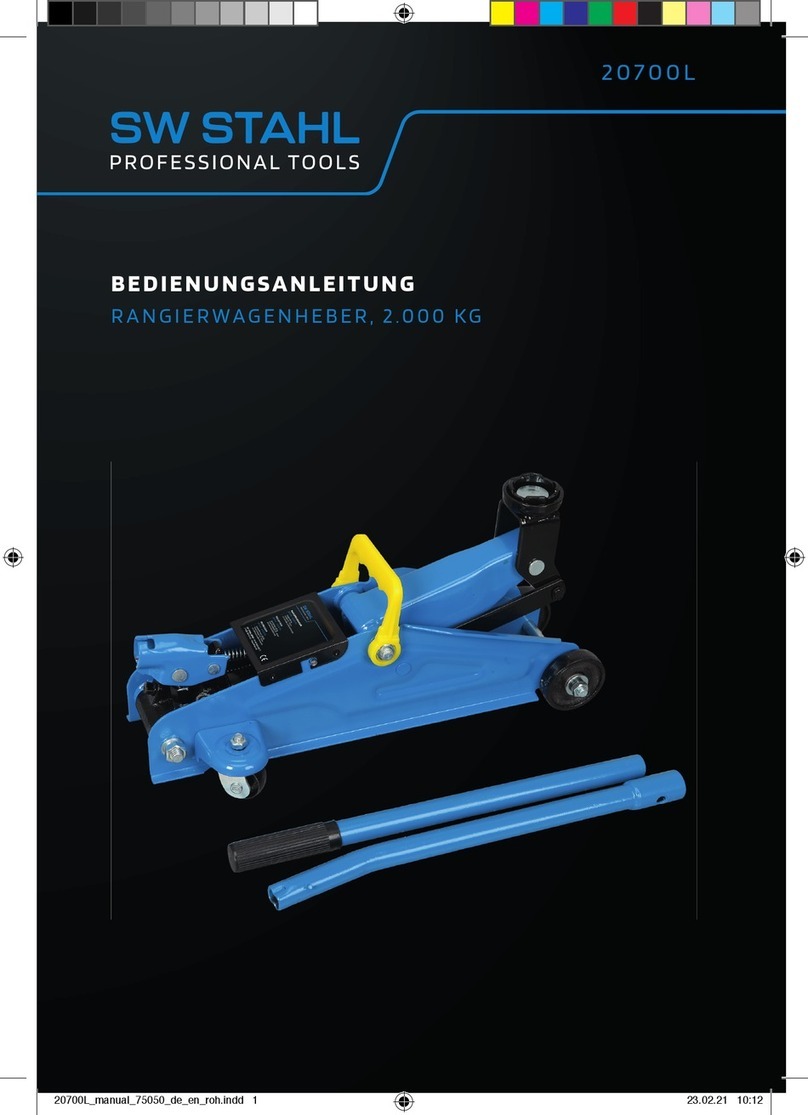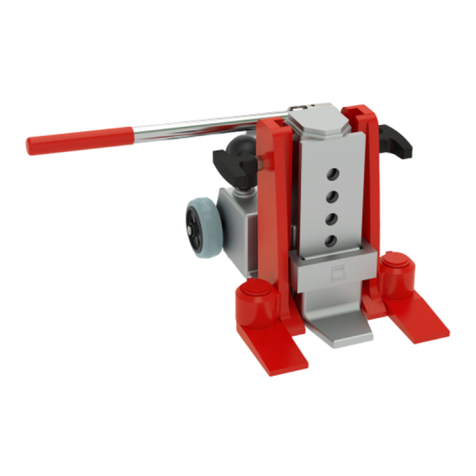
3
ISTRUZIONI PER L’USO IT
INDICAZIONE PER LA SICUREZZA DEL PERSONALE
• Si raccomanda la massima attenzione, avendo cura di concentrarsi sempre sulle proprie azioni. Non
utilizzare il sollevatore in caso di stanchezza o sotto l’effetto di droghe, bevande alcoliche o medicinali.
• PRESTARE SEMPRE LA MASSIMA ATTENZIONE DURANTE LE ATTIVITÀ PREVISTE PER
L’UTILIZZO DEL SOLLEVATORE AL FINE DI EVITARE POSSIBILI SERI INFORTUNI.
• Utilizzare sempre i seguenti dispositivi individuale di protezione:
• Scarpe di sicurezza;
• Guanti di protezione con adeguata resistenza meccanica
• Avere cura di eseguire le operazioni di utilizzo del sollevatore in posizione sicura mantenendo il proprio
l’equilibrio in ogni momento. Una posizione di lavoro sicura ed un’adatta postura del corpo permettono
di poter controllare meglio eventuali imprevisti durante l’attività.
ISPEZIONE E MANUTENZIONE
Periodicamente come previsto dalla Direttiva macchine e dalle norme che regolarizzano le attività
di verica delle attrezzature di sollevamento, è obbligatorio eseguire periodicamente le seguenti ispezioni:
• Prima di ogni utilizzo effettuare un controllo visivo assicurandosi che non vi siano presenti difetti
superciali come deformazioni, cricche, ossidazioni o incisioni che possano pregiudicare il corretto
funzionamento del sollevatore.
• Si consiglia di pulire esternamente ogni quindici giorni i pistoni.
•In caso di prolungato inutilizzo del sollevatore, prima di un nuovo impiego controllare la perfetta funzionalità.
• Eseguire veriche straordinarie a seguito di eventi particolari che possano aver danneggiato il
sollevatore con conseguenti effetti negativi sul corretto funzionamento.
Tutti gli interventi di manutenzione e di riparazione devono essere eseguiti da personale autorizzato,
e dove lo si ritiene necessario rivolgendosi al centro di riparazioni specializzato di Beta Utensili
utilizzando esclusivamente ricambi originali.
Controllo livello olio
Controllare almeno due volte all’anno il livello dell’olio nel serbatoio, Olio compatibile ATF DEXRON IID.
Per controllare il livello dell’olio eseguire i seguenti passaggi:
1) Posizionare il sollevatore, con pistoni completamente abbassati.
2) Il livello dell’olio deve essere all’altezza del bulloncino che si trova sul anco del serbatori sotto il
carter, svitandolo si può controllare (g. 15)
3) Se il livello dell’olio è più alto del previsto anche di poco, oppure il sollevatore è stato capovolto
(può succedere durante il trasporto) l’olio viene espulso attraverso il depressore sotto forma di
nebulizzazione. Questo fenomeno scompare da solo quando il livello dell’olio si è ripristinato.
4) Se l’olio all’interno del serbatoio supera di molto il livello indicato è consigliabile toglierne per ripristinare il livello.
Spurgo aria
Ogni volta che viene fatta la manutenzione sul sollevatore smontando e rimontando parti collegate al
serbatoio ed alla motopompa è consigliato eseguire lo spurgo, nel seguente modo:
1) Fare uscire completamente i pistoni.
2) Togliere il carter e chiudere il rubinetto
3) Rovesciare il sollevatore sul anco che lascia accesso al grano posto a lato del basamento (g.16)
4) Allentare (NON svitare mai completamente il grano) fare rientrare i pistoni con le mani.
5) Fare uscire tutta l’aria dal grano no alla fuoriuscita dell’olio, quindi richiudere il grano stesso.
6) Riportare il sollevatore in posizione di lavoro.
7) Aprire il rubinetto
8) Fare rientrare completamente i pistoni e controllare il livello dell’olio.
9) Provare il sollevatore senza carico, se la discesa dei pistoni è a scatti ripetere la procedura per
almeno 2 o 3 volte.
3067.60-15T.indd 3 13/04/18 15:30

